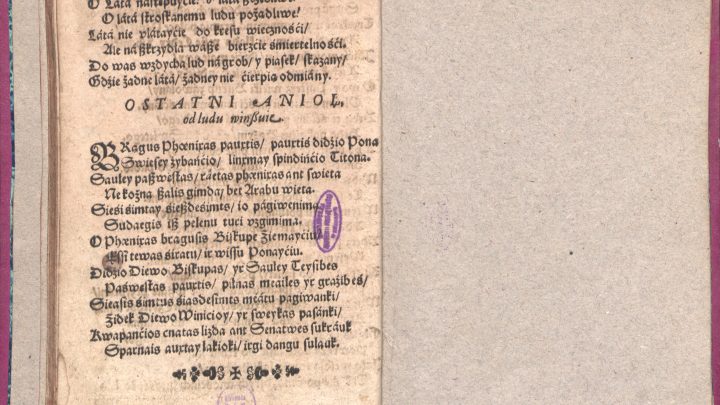Growth of Šiauliai City and the Great Constructions
Foundations of Šiauliai city formation are clearly visible in the historical sources of the 17th century. The documents of 1649 and 1650 mention Vilniaus, Rūdės, Dvaro streets, the names of which have survived to this day. It is known that they led to the then centre of Šiauliai – the market square. The names of the streets testify that at that time Šiauliai had already become a city, because villages or other small settlements did not have streets, only roads and pathways. The name of one of the streets – Dvaro – indicates the existence of the manor in the city.
The wealthiest inhabitants of the city settled around the market square; a court, other institutions were founded, businesses developed, craftsmen worked. There was a large church site near the market square (in the south-east). Until the 17th century, a wooden church stood there, in 1617, the construction of the brick one was started. It is said that the first Christian cemetery was set up near the wooden Catholic church built in the middle of the 15th century, which stood next to the present St. Peter and Paul’s Cathedral. The new brick church was built in the 17th century on the initiative of Vilnius voivode Kristupas Radvila Našlaitėlis, who at that time ruled Šiauliai land ascribed to him, but he died in 1616, not living to see the end of the construction. The brick church building was finished only in the middle of the 17th century. His initiative was continued and supported by the elder of Samogitia Jeronimas Valavičius, and the organizer of all constructions was priest Petras Tarvainis. This active man came to Šiauliai in 1614 from Aukštaitija parish and straight away started to implement the design of the brick church. It was he to whom the major part of merits belongs that this church was built. P.Tarvainis organised the purchase of building materials from local nobles and ensured the establishment of church land boundaries, for which he had to confront the manor of the city and the locals who did not want to acknowledge these boundaries. By the way, this active priest also has other merits: a book of 24 pages, a gracious appeal to the bishop of Samogitia Jurgis Tiškevičius, who in 1634 came to consecrate the church. This text entitled ‘Linksmasis Pasveikinimas’ (‘Merry Greeting’) is the first written narrative about Šiauliai, written in syllabic versification, and is the first example of syllabic versification of Baroque poetry in the Lithuanian literature.










Leave feedback